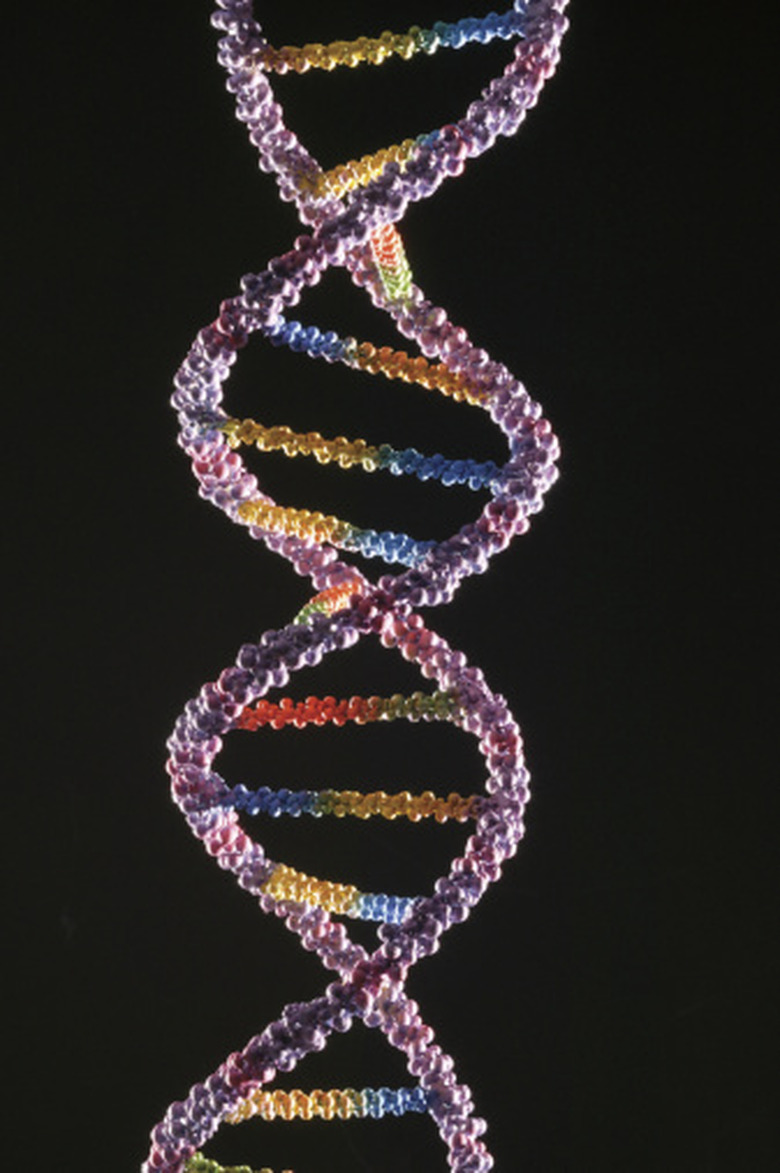How To Integrate Biology With Chemistry & Physics
Many high schools teach biology, chemistry and physics as separate classes. Separate classes may suggest that the subjects are unrelated, but this would be an inaccurate assumption. Integrated science classes increasingly linking the subjects of biology, chemistry and physics.
Defining and Integrating Science Disciplines
Defining and Integrating Science Disciplines
As Merriam-Webster defines them, biology is the study of life, more specifically "a branch of knowledge that deals with living organisms and vital processes"; chemistry consists of "a science that deals with the composition, structure and properties of substances and with the transformations that they undergo"; and physics means "a science that deals with matter and energy and their interactions."
Integrating Biology and Chemistry
Integrating Biology and Chemistry
The relationship between chemistry and biology offers many possible connections and science experiments for college students in biology. All life depends on chemical processes. The chemical process of photosynthesis, which uses the sun's energy to convert water and carbon dioxide into glucose (sugar), forms the base of most food chains. Like photosynthesis, chemosynthesis stores energy through chemical processes and underpins the food chains along deep sea vents, suggesting possibilities for Earth's earliest life and life on other planets and moons.
Bioluminescence means living light. Chemical processes in a variety of organisms, ranging from plants to fungi to animals, including dinoflagellates, jellyfish and angler fish, create this living light. Digestion and cellular respiration also depend on chemical reactions within living organisms. Understanding the chemistry of oil production, based on the decomposition of algae under heat and pressure, offers one solution to the global energy crisis by making petroleum from algae, but it potentially creates another environmental crisis through continued use of previously nonrenewable fossil fuels.
Integrating Biology and Physics
Integrating Biology and Physics
The physics of living organisms also offers opportunities for science experiments for college students of biology. Physics includes the studies of mechanics, heat, light, electricity and sound. Studies of the energy used by living organisms, whether from photosynthesis or cellular respiration, blur the line between biology and physics. Studies of bioluminescence examine both the energy and the light generated by organisms, combining physics and biology. The electricity of the nervous system, the mechanisms that trigger hibernation or estivation, and the sensitivity of the retina and eardrum apply the principles of physics to the mechanisms of organisms.
Studies of the forces that break bones provide insights into biomechanical designs for repairing those same bones to their pre-broken strength and suggests methods to correct environmental or genetic defects or deficiencies. Understanding the mechanics and structural requirements of various body joints has already provided the information needed to design replacement knee, hip and shoulder joints.
Integrating Biology, Chemistry and Physics
Integrating Biology, Chemistry and Physics
Organisms, whether living, dead or extinct, function because of their combined biological, chemical and physical elements. Understandings from these disciplines provide insights into the evolutionary and structural characteristics of organisms. For example, trees stand because the cellulose in their cell walls and the water stored in their vacuoles provide the structural strength to hold up the tree's biomass, including the leaves that convert water and carbon dioxide to energy to fuel the chemical processes that allow cells to grow and reproduce to form new cells. Understanding the structural strength of bones and the chemical processes of metabolism helps scientists understand and re-create the biology of extinct organisms like dinosaurs and marine reptiles. Studying the physics and chemistry of Earth-bound biological systems suggests the existence and structures of potential life forms under extra-terrestrial conditions.
Biology, Chemistry or Physics?
Biology, Chemistry or Physics?
Many colleges now offer integrated science programs rather than isolated studies in biology, chemistry or physics. These college programs recognize the interconnectivity of scientific disciplines. The current kindergarten through high school science standards focus on integrated science, with increasing emphasis on interconnected science, technology, engineering and mathematics (STEM or, with the addition of art, STEAM) education. Many colleges, ranging from Princeton's Integrated Science Curriculum to University of Oregon's Department of Chemistry and Biochemistry to the Biology Department at Harvey Mudd College now offer courses and degrees that do not limit themselves to a single traditional scientific discipline.
References
- Merriam-Webster Dictionary: Biology
- Merriam-Webster Dictionary: Chemistry
- Merriam-Webster Dictionary: Physics
- University of Saskatchewan: Chemistry and Physics Instruction: Integration, Ideologies, and Choices
- Princeton University: What Is Integrated Science?
- University of Oregon: Department of Chemistry and Biochemistry
- Harvey Mudd College: Biology
Cite This Article
MLA
Blaettler, Karen G. "How To Integrate Biology With Chemistry & Physics" sciencing.com, https://www.sciencing.com/integrate-biology-chemistry-physics-8565589/. 29 October 2018.
APA
Blaettler, Karen G. (2018, October 29). How To Integrate Biology With Chemistry & Physics. sciencing.com. Retrieved from https://www.sciencing.com/integrate-biology-chemistry-physics-8565589/
Chicago
Blaettler, Karen G. How To Integrate Biology With Chemistry & Physics last modified August 30, 2022. https://www.sciencing.com/integrate-biology-chemistry-physics-8565589/
